Secularism and Sabbateans
In 1789, an anonymous pamphlet was published in London that bore witness to what its traditionalist author found most shocking in a world rocked by revolution:
Those from the new world, the heretics and agnostics, lie asleep in their beds until the time of the morning prayers has passed. And after such a man has risen from his bed, he does not hasten to do the work of the Lord, but only after seeing to the needs of his home and partaking of other pleasures. Then he lays phylacteries in order to keep up appearances with the other members of the household. And he takes care not to leave the phylacteries on too long lest they leave a mark on his forehead. Or that someone from his crowd might see him wearing phylacteries, which would cause him great shame.
Although the “heretic” described here still prays, this paragraph compresses a catalog of the changes associated with the secularization of Europe’s Jews: heretical belief, violation of the commandments, behavior dictated by social convention in place of rabbinic law, and abandonment of the “work of the Lord” in favor of material pleasures. (Who knew that sleeping in was a sign of modernity?)
How exactly does a traditional, religious society secularize and why? The question continues to bedevil historians of Europe and other areas of the world. According to one theory associated with the great German sociologist Max Weber and more recently with Peter Berger, it was the Protestant Reformation that banished the angels from earth and sequestered them firmly in the heavens. Weber famously held that the Protestant idea of grace, as opposed to works, indirectly unleashed the engine of capitalism. The contemporary theorist Marcel Gauchet has argued that the roots of secularism can be found in monotheistic religion itself. In vanquishing polytheism, Judaism, Islam, and Christianity exiled God from this world. My teacher Amos Funkenstein argued that thinkers in the 17th and 18th centuries reinterpreted key medieval scholastic concepts of God as being about the world. Thus divine omnipresence became almost indistinguishable from the concept of space, and divine providence came to mean the workings of history. In doing so, he argued, these thinkers dug the grave of the old religions with shovels furnished by theology.
These explanations for the emergence of the secular have one thing in common: they locate it in the realm of ideas. But secularism was not—and is not today—only a movement of ideas. It is also the sum-total of behaviors and practices, as well as the belief systems that underlie them. Its adherents are not only the writers of books, but also those who, without formulating a coherent philosophy, stop doing “the work of the Lord” and instead pursue the pleasures of this world. Secularization means not only absenting oneself from church or synagogue on Sunday or Saturday, but also following a lifestyle not dictated by religion during the rest of the week.
If these trends proceeded at an uneven pace throughout Europe with notable peculiarities for each national group, the history of secularization was even more complicated for the Jews. The Jewish community had considerable weapons at its disposal to discipline those who would rebel against its authority (for instance flogging and bans of excommunication). But the community was not a sovereign government, and its powers were limited. In addition, once a “neutral society” (to use Jacob Katz’s felicitous phrase) emerged in Western Europe, a society that one could enter without converting, it became possible for Jews like the French Sephardic Isaac de Pinto to remain Jews without religion. Secularization became the avenue to rebel both against the rabbis and against the Jews’ minority status. Such Jews held all religion—Jewish and non-Jewish—to be responsible for Jewish disability; a secular world—Jewish and non-Jewish—promised equality.
If the relationship between Enlightenment ideas and the social process of secularization is a vexed one for Europe in general, it is even more vexed for the Jews. Since the Jews were a minority, to what extent did they have to develop their own Enlightenment in order to secularize? Or was it sufficient to be open to the new philosophies swirling around them? And were their gestures of independence from the rabbis—avoiding synagogue, spurning the commandments, and living halakhically prohibited lifestyles—homegrown or imitations of their neighbors?
Over a half century ago, the Israeli historian Azriel Shohet published a revolutionary book that argued, against the conventional wisdom, that it was not the Berlin Haskalah (Enlightenment) in the last decades of the 18th century that paved the way toward secular modernity among German Jews. Rather, changes on the ground starting in the first decades of the 1700s anticipated the movement founded by Moses Mendelssohn and his disciples many years later. Shohet showed that some German Jews began to dress like their neighbors, teach their daughters French and the piano, enjoy material luxuries, violate rabbinic sexual norms, and avail themselves of Gentile courts. They were motivated, Shohet argued, less by the philosophy of the Enlightenment, about which they knew little, than by the practices of the wider society they felt fewer inhibitions in imitating.
hmuel Feiner, a leading historian of the Haskalah who teaches at Bar-Ilan University, has returned to these questions. Building on Shohet, as well as on more recent historians such as Todd Endelman and Jonathan Israel, Feiner lays out a more nuanced and persuasive case for locating the beginning of Jewish secularization in the second half of the 18th century, if not earlier. Although focused primarily on German-speaking lands, he draws his evidence from Poland and Russia as well as London, Amsterdam, and even the colony of Virginia. Feiner argues “a heterogeneous group of skeptical, religiously lax Jews, scattered over many different places, emerged, developed, and spread.”
Feiner suggests that Moses Mendelssohn, traditionally seen as the harbinger of modernity, actually reacted against the new “hedonism.” In his 1755 essay “On Sentiments,” Mendelssohn argued that “contemplation of the structure of the world” gives the philosopher “sublime pleasure” as opposed to the hedonistic pleasures of the flesh. Feiner believes that this argument for philosophy over material desire may well have been aimed at those Jews who had broken loose from tradition and embraced libertinism. He sees Mendelssohn, rightly I think, as a conservative figure whose attempt to defend Orthodox Enlightenment anticipated Samson Raphael Hirsch’s 19th-century neo-Orthodoxy. The famous conversion of Mendelssohn’s children to Christianity cannot be laid at the door of Mendelssohn’s philosophy but was rather a symptom of a much broader social disintegration.
Following the language of the time, Feiner calls this disintegration the “new Epicureanism,” a cultural phenomenon that included the following beliefs and behaviors:
public displays of defiance in the street or the synagogue against religious discipline and belief in divine providence . . . ; claims that the Torah was an invention of Moses or that the existing Jewish religion was a distortion of the pure Mosaic principles of faith; . . . violations of Sabbath and kashrut prohibitions; fashionable dress that breached religious restrictions; men’s shaven beards and sidelocks; married women’s uncovered heads; women in low-cut dresses; leisure time spent in taverns, coffeehouses, or the theater; sexual offenses.
And the list goes on. One early indication of these new behaviors is in Joseph ben David Leipnik’s 1738 Passover haggadah in which the wicked son is portrayed clean-shaven, in an elegant 18th-century suit with a powdered wig. The wise son, by contrast, is bearded and dressed like a traditional Jew.

What distinguishes Feiner’s superb study from Shohet’s is the way ideas and practices are woven together. While not all those who broke from tradition did so based on the deistic conviction that God does not act in the world or reveal himself in the form of divine laws; such Enlightenment ideas clearly expressed in philosophical terms the behaviors of those rebelling against rabbinic authority. But if ideas were less the cause of these changes than one expression of them, what was their cause? Feiner offers several explanations, some of them more convincing than others. Borrowing from the work of several European historians, he argues that the increasing demand for material luxuries in the 18th century left its mark on the Jews, especially those in the expanding mercantile class. It was therefore especially in cities open to international trade, such as Hamburg, Amsterdam, London, and Bordeaux, and especially among the Sephardim, that economic prosperity was accompanied by religious laxity. From these margins, the new values gradually infiltrated other Jewish communities.
The problem here is that desire for material goods did not have to lead to abandonment of rabbinic law. While there are certainly ascetic tendencies in Jewish thought and while communities in different periods tried to restrict conspicuous consumption (often to avoid Gentile criticism), the rabbis never condemned wealth as such. In Renaissance Italy, for instance, many Jews coveted and collected luxuries, and although some of these Jews were lax in their performance of the commandments, wholesale secularization never ensued.
The same may be said for sexual transgressions, which were often linked to dressing in provocative Gentile fashion. Rabbi Jacob Emden, a key rabbinic critic of the new behaviors, specifically linked cutting one’s beard “to make him look like a female” with “flirtation with beautiful naked women. . . [and] lovely buxom harlots.” But the evidence for sexual promiscuity in 18th-century Germany does not look significantly different from 13th-century Spain or 16th-century Italy. This is a comparative question that Feiner might have raised to shed light on what was truly new in the 18th century.
What, in fact, was the role of deviance in secularization? At what point does individual rebellion against religious authority become a mass phenomenon? The problem is not a new one. When Shohet published his book in 1960, Jacob Katz criticized him for assuming that deviance means the emergence of new norms. For Katz, those who broke rabbinic law knew that they were guilty of sin, and sought atonement when caught. Their values were still the same as those of the rabbis, even when they transgressed. Katz no doubt went too far in this argument. As we know from the study of peasant cultures, local traditions often persist in the face of very different church-based norms. So, too, in Jewish society, the authority of rabbinic law did not mean that other norms played no role. For example, a fascinating 18th-century responsum relates that a man cursed the rabbis for ruling that he had to refrain from sexual relations with his wife not only for the days of her menstrual bleeding, but for an additional week as well. This rebel had his own ideas of what the interpretation of biblical law should be, ideas that may have been more widespread.
It may thus be the case, as both Shohet and Feiner claim, that ordinary Jews in the 18th century began to develop their own norms, partly by embracing new ideas from their surrounding society and partly as a result of internal developments. Their rebellion against the rabbis may have started without a coherent ideology, but it came to develop a set of ideas that we associate with secular modernity. Such permissive ideas may also have circulated in Jewish society for many centuries, but they could only take root against rabbinic norms when communal structures weakened in the 18th century. None of this would have been possible without the European Enlightenment and the revolutionary transformations in European politics. Secularization may have begun in the grassroots, but in order to flower, it needed change from the top.
Katz also argued against Shohet’s reliance on preachers or moralists like Emden for evidence of a deviant culture. It is always in the interest of such preachers to exaggerate deviations from the norm. Feiner, too, relies heavily on such preachers, especially for the period before 1770 when direct evidence of secularization is meager. Emden, who provides so much of the evidence for the early period, is a singularly dubious sociologist of his community. His autobiography reveals a man of great psychological complexity, filled with inner conflicts and even pathologies. Emden was particularly obsessed with sexual transgressions. The autobiography, an extraordinary document of the time, reveals that when the rabbi was a youth he was “hot-blooded” and “very hungry for a woman.” Seduced by a young widow, he almost gave in to his passion, which he describes in lurid detail.
Emden’s “discovery” of sexual peccadilloes was part of his witch-hunt against Sabbateans, followers of the 17th-century Turkish failed Messiah, Shabbtai Zevi. For Emden, as for many heresy hunters, heretics are compelled to indulge in sexual orgies as part of their heresy. Here, for instance, is his account of Wolf Eybeschütz, the younger son of the Sabbatean rabbi, Jonathan Eybeschütz:
When he would pass through and spend the night in Hotzenplotz, he slept with the Gentile woman who owned the inn there, and she took from his trouser pocket a gold watch and a purse with gold dinars . . . They also said that on his travels, he had with him a whore . . . wearing a man’s clothing as if she were his male servant.
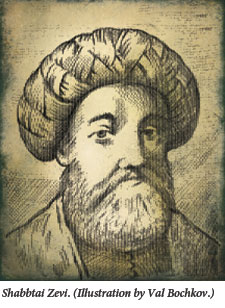
A shocking story about the son of a distinguished rabbi, except that Emden relates a similar story from an inn in which another male guest suspected of Sabbateanism was also said to sleep with his “male” servant who, when spied on through a keyhole, turned out to be a girl. Emden’s repeated use of this theme of sex with a girl servant disguised as a male arouses the suspicion that he manufactured such cases to suit his image of heresy if not his own sexual fantasies.
Feiner attributes to Sabbateanism a role, albeit not the only role, in undermining German Jewish society in the 18th century. This is the subject of Pawel Maciejko’s magnificent new study of Frankism, the main expression of Sabbateanism in the world of the 18th-century Ashkenaz. Frank was born in Podolia in eastern Ukraine in 1726 to a Sabbatean family and taken as an infant to the Ottoman Empire where he became a convert to the Dönmeh, the sect of Jews who converted to Islam in imitation of Shabbtai Zevi’s conversion in 1666. In 1755, he returned to Podolia, which already had many crypto-Sabbateans, and developed a following. A scandalous ritual, allegedly including dancing around a naked woman (our main source here is once again Emden), landed him in trouble with the local Jewish authorities, who denounced him and his followers to the Catholic Church. He turned the tables on the rabbis by claiming to represent the true Judaism, which he called “counter-Talmudism.” This version of Judaism rejected rabbinic law and embraced the Christian triune God.
Frank’s conflict with the Jewish establishment reached a climax with a disputation in Lwow in 1759 that included the notorious blood libel, namely that Jews use the blood of Christians for ritual purposes. Frank then led his flock—which numbered, it seems, in the thousands—to convert to Catholicism. He went to Warsaw where, at first, he was treated like nobility, but soon ran afoul of the authorities on charges of continuing to practice some form of Judaism in secret. He was then imprisoned over the next thirteen years in the ecclesiastical fortress of Czestochowa. After being freed by Russian troops, he went to Brno in Moravia where he established ties with wealthy Sabbatean families and also with the Austrian Emperor Joseph II. But, once again, he out-stayed his welcome and had to decamp for Offenbach, Germany, where he styled himself a baron and conducted secret rituals with his followers until his death in 1791. His daughter Eve took over leadership of the movement until her death in 1816.
Maciejko’s study has many virtues. He has seemingly mined every available text on Frank and the Frankists; unlike earlier scholars, such as Gershom Scholem, he commands the Polish sources as well. He tells the story in riveting style. He also demonstrates how the movement evolved. While the Sabbateans initially saw themselves fully as Jews, albeit with the belief that the Messiah had come in the form of Shabbtai Zevi, Frank developed the idea that he and his followers were the true Israel, while everyone else descended from the “mixed multitude,” which, according to the Book of Exodus, had tagged along with the Children of Israel when they left Egypt. Strikingly, Frank’s rabbinic opponents used the exact same language against him. This charge and counter-charge set up a much more fraught conflict than that between, say, the Rabbinites and the Karaites in the early Middle Ages, even though the latter, like the Frankists, rejected belief in the Talmud. Now the division became almost racial: the heretics were not only heretics because of their beliefs, but also because of their descent.
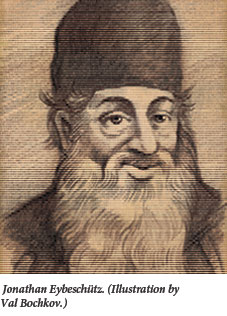 | 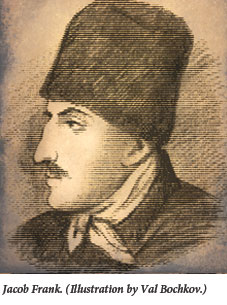 |
When Frank was imprisoned in Czestochowa, he became fascinated with the cult of the Virgin Mary, symbolized there by the Black Madonna. While Frank himself had at times posed as the Messiah, from this time on, he shifted messianic expectations from himself to his daughter. He developed an extraordinary theology in which his daughter Eve was the bodily realization of the Divine Virgin, identified with the kabbalistic emanation Malkhut (or Shekhina). In his syncretistic religion, the Virgin was not only an intercessor with God (also the role of the Shekhinah in 13th-century Kabbalah) but she became God herself.
Frank also developed a host of bizarre rituals, some of them overtly sexual, in which women were equal to men. (Some of these involved separate—but equal!—male and female rites while in others, the two sexes were combined.) Maciejko only mentions these rituals in passing, but his study is now complemented by the path breaking new work—published almost simultaneously—of Ada Rapoport-Albert on women in the Sabbatean movement.
Rapoport-Albert’s exhaustively researched and brilliantly written book shows how at the very outset of the Sabbatean movement in the mid-1660s, women took at least an equal role with men in falling into fits of ecstatic prophesying for the Messiah. While we have only scanty reports of women prophesying in the Bible and none later, the background to this sudden explosion of prophecy may have been rooted in prophesying by female conversos in Spain, as well as similar developments in Sufism.
Shabbtai Zevi also gave honored roles to women in his immediate circle, calling them to the Torah in violation of common Jewish practice. His first wife, Sarah, also seems to have taken an active role in the movement. Thus, Jacob Frank’s egalitarian impulses had their roots in the origins of Sabbateanism. Since Rapoport-Albert takes a greater interest in Frank’s writings than does Maciejko, reading her book together with his gives the fullest account of both the history and thought of Frankism.
One aspect of Frankism on which Rapoport-Albert is especially good is the peculiar tension between sexual libertinism and asceticism. Sexual abstinence had a long pedigree in Jewish mysticism, even though all mystics were expected to marry. Both Shabbtai Zevi and Jacob Frank incorporated such asceticism into their rituals. Shabbtai Zevi was said to have been largely celibate for much of his married life, while Frank prescribed celibacy for those who attended his Offenbach court. At the same time, it appears that the inner circle at Offenbach—primarily Frank’s own family (though probably not his daughter)—engaged in some kind of sexual orgies. Since the antinomian doctrine of Sabbateanism taught that the prohibited was now permitted, the sexual prohibitions and especially the incest laws no longer applied. Frank referred to his company as “brothers and sisters” so that the lifting of the incest laws encouraged them to mate. The point Rapoport-Albert makes here is that this was hardly mere libertinism; instead, it was part of a carefully ordered and controlled set of rituals that oscillated between sex and abstinence.
But how, to return to Feiner’s subject, do these fine studies shed light on the process of modernization and secularization? Was the Sabbatean “liberation” of women, if that’s what it was, a forerunner of modern egalitarianism? A famous argument by the great historian Gershom Scholem had it that Sabbateanism shook the authority of the rabbis and prepared the ground for Enlightenment and Reform. A movement within Jewish history and not the external European Enlightenment was responsible for Jewish modernity. Feiner’s argument shares something with Scholem’s in his search for an inner dialectic of secularization.
It is striking that Maciejko never mentions Scholem’s thesis and Rapoport-Albert discusses it only in an appendix in connection with a fascinating Frankist text calling for the emancipation of women. Maciejko shows that insofar as 18th-century Sabbateanism was a mass movement, it was only so among the lower classes in Poland; there, Frankism led to the Catholic Church, not exactly a motor of modernization. Only the wealthy Sabbateans in Bohemia and Moravia may be said to have been moved by their heretical beliefs toward modernity, but these believers were concentrated in a handful of families, hardly enough to spark a mass movement. Rapoport-Albert’s lengthy conclusion points in a different direction: The impact of Sabbateanism was primarily on the new Hasidic movement and its impact was largely negative. The almost complete exclusion of women from early Hasidism was, she believes, a reaction against the inclusion of women in the Frankist movement. If anything, then, Sabbateanism provoked a conservative response, even in Hasidism, a movement often, if wrongly, seen as revolutionary.
But if Sabbateanism in its various 18th-century forms was not that central a cause of modernity, Feiner is still convincing, particularly for the 1770s, 80s, and 90s (the material that takes up the second half of his book) in arguing for an internal flowering of Jewish secularism, revealing in the process a rich gallery of Jewish deists, agnostics, and heretics. What is most striking is how many of these figures are virtually unknown or known only to specialists. Our view of the 18th-century Haskalah can no longer be limited to Moses Mendelssohn and Salomon Maimon. Some of the characters in this drama wrote books and others simply acted on their new beliefs. Whether those who broke with tradition embraced a deistic view of God or whether they simply wanted to rid themselves of ancient practices, a revolution was brewing equally in salons and saloons, among intellectuals and ordinary people.
To be sure, the secularization of the Jews turned out to be a longer and much more complex process than simply a one-way street from religion to disbelief, from synagogue to the public square. But if its course has been more a winding river than a precipitous waterfall, there can no longer be any doubt that the origins of secular modernity were incubating in the 18th century, while the Jews still lived—figuratively and actually—in the ghetto.
Suggested Reading
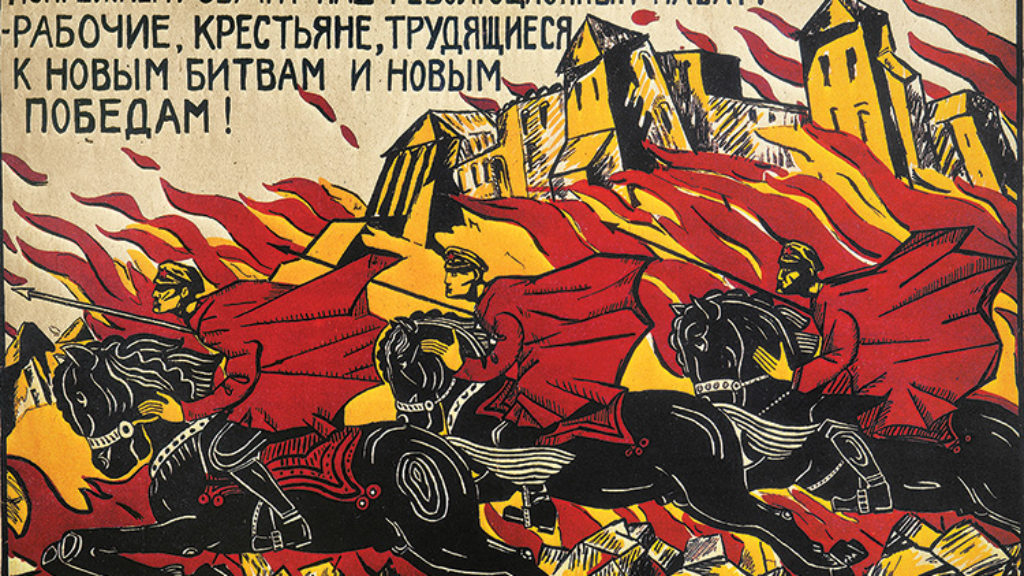
Lenin and Maimonides
Lenin and Maimonides, Communist leaflets and Hebrew verse: What could be more different, in language, in sensibility, in world view?
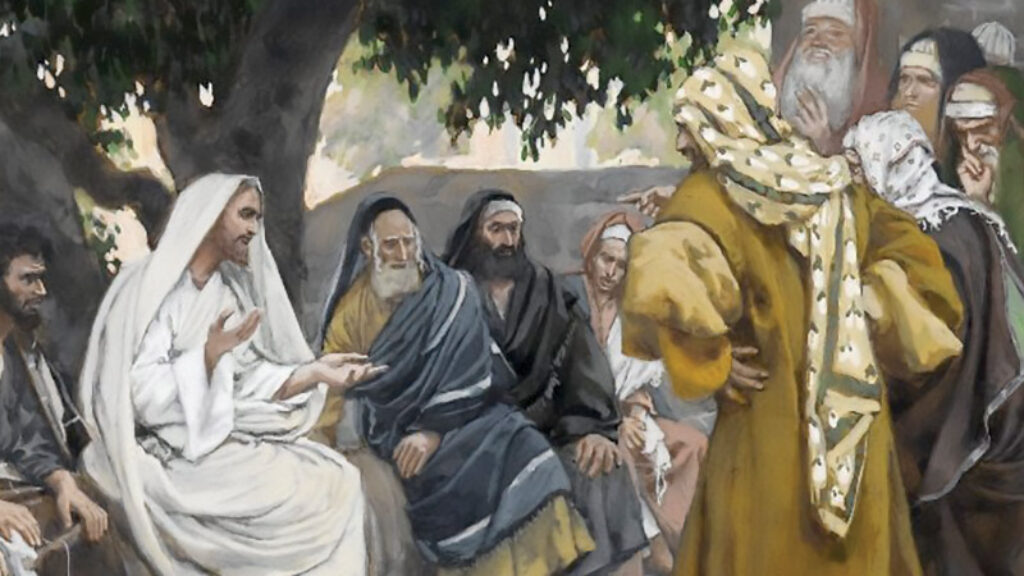
Like a Son of Man
Who gets to anoint the Messiah?
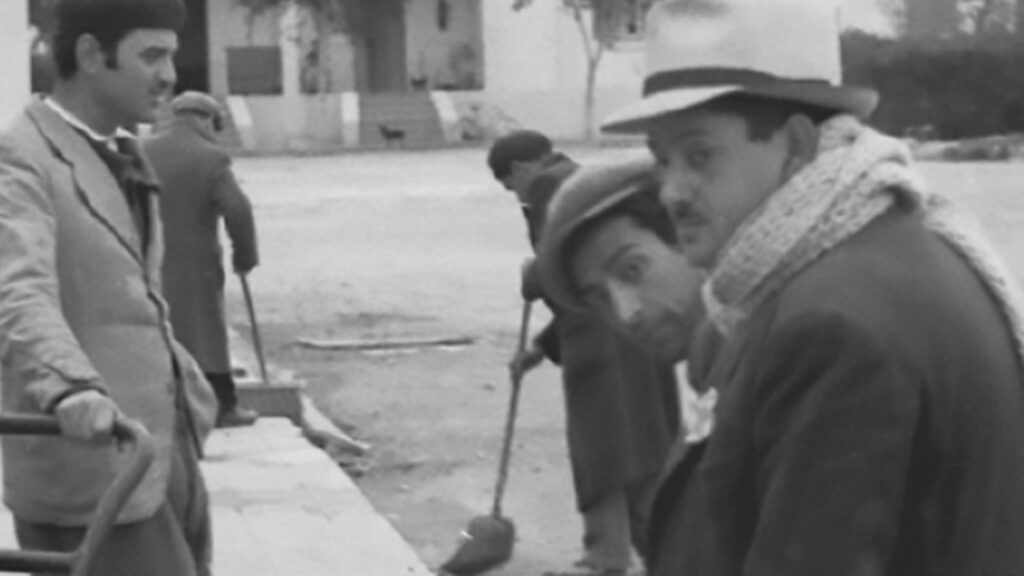
North Africa during World War II
Mentions of wartime North Africa conjures up visions of Humphrey Bogart, Ingrid Bergman, and Claude Rains in Casablanca. It was far worse than that...

Palestine Portrayed
The 1948 War and the problems it left unresolved have returned to the top of the agenda for both diplomats and historians.
Comments
You must log in to comment Log In